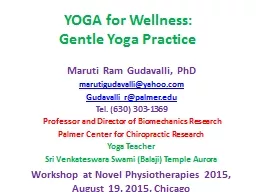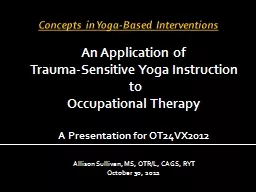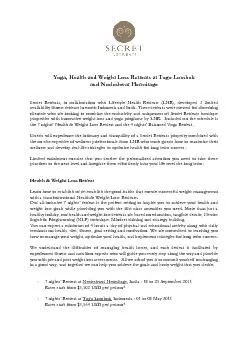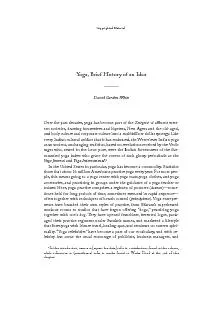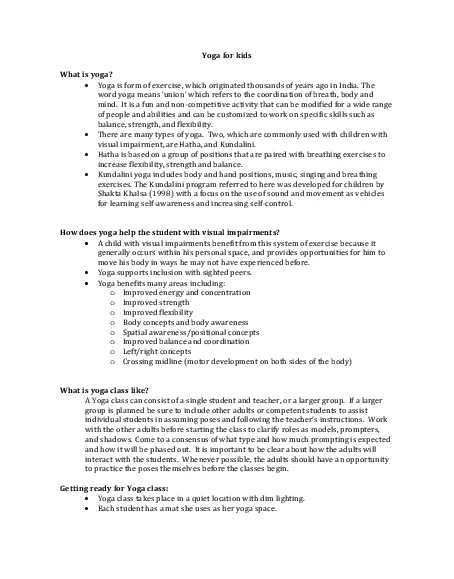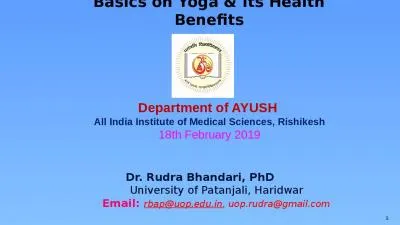PPT-Kriya Yoga: A Mystical Practice for Everyday Life
Author : lois-ondreau | Published Date : 2016-06-04
Nora Quiason MD Swami Kuvirananda Outline Part One Mysticism Kriya Yoga Mystical and Kriya Yoga Concepts Immortality Dharma Karma Death and Rebirth Aham Brahmasme
Presentation Embed Code
Download Presentation
Download Presentation The PPT/PDF document "Kriya Yoga: A Mystical Practice for Ever..." is the property of its rightful owner. Permission is granted to download and print the materials on this website for personal, non-commercial use only, and to display it on your personal computer provided you do not modify the materials and that you retain all copyright notices contained in the materials. By downloading content from our website, you accept the terms of this agreement.
Kriya Yoga: A Mystical Practice for Everyday Life: Transcript
Download Rules Of Document
"Kriya Yoga: A Mystical Practice for Everyday Life"The content belongs to its owner. You may download and print it for personal use, without modification, and keep all copyright notices. By downloading, you agree to these terms.
Related Documents




